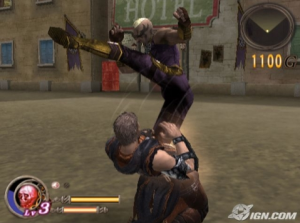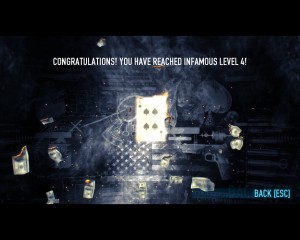Today’s post is a “look behind the curtains” in a manner of speaking. With Game-Wisdom, I’ve had to play a lot of video games over the last few years and in turn, it has given me a way to focus my already analytical thought process to an extreme point. Today, I can figure out everything I need to know about a video game, nine times out of ten, in one hour of play; breaking down the qualities of a game into different sections.
For every game that I analyze for Game-Wisdom I go through several different areas of examination; the longer I spend on a game is generally considered a good sign. With that said, I find that within one hour, I have everything I need to determine if I’m going to enjoy a game or not and make my determination on the game’s design.
0-15 –The Surface Layer
For the first 15 minutes of a game, this is the point where I’m going over everything that has to do with interacting with a title. For this part, I’m focusing mostly on the UI and control scheme, because these will make or break the game very easily. If I find that the game is hard to control or the UI doesn’t do a good enough job explaining itself, then the game is finished for me.
The reason is that if I’m having a hard time enjoying your game for the first five minutes, then it’s not going to get better in a few hours. To put it another way, if you’re house hunting and you walk into a house with a caved in ceiling, it doesn’t matter how great the bathrooms are.
During this part, I’m also paying attention to any major bugs, crashes and issues that are annoying now, but could become unbearable over hours of play. These issues can also be UI as well, such as awkward controls or a UI that feels unwieldy.
I’ve said this before, but having the best foot forward with your game is critical in today’s market; when people are overloaded with games to play.
I think my actual record according to Steam for least amount of time spent with a game is one minute, and no, I’m not going to tell you which game has that honor. In this case, the main gameplay hook was too limited to hold my attention, which is something that is usually reserved for the next category.
15-30 — The Core Gameplay
If the game survives the first 15 minutes, then it’s time to talk about the core gameplay: What am I going to be doing for X amount of hours. This is the part where I’m looking at the mechanics and design of the title to see how they work. As we’ve talked about before, having harmonizing game design is important and this is where I look for any cracks in the design.
If elements don’t work or the game is not hooking me, I’ll find that out here. Another point is if the game simply doesn’t have enough content to sustain itself past a few plays; I’ve seen plenty of titles built around one core mechanic that doesn’t change at all or grows to present new challenges and means of play.

The next part is examining how the game mechanics are and whether there is enough here to warrant more play
A lot of games I’ve played that didn’t make it to the point of writing a piece on them ended at this point of my thought process. If the game is interesting enough, I may still do a video piece on them. I hate to say this point, but a lot of the games that end up on the “interesting idea, limited gameplay” list are those from the Indie market.
Usually the pacing and structure of AAA games is good enough that I have to give it more time to see how/if the game design changes at all.
The final category is where most of my favorite games fall into.
45 Minutes to an hour and beyond — Holding Interest
For the final category, I’m now looking at whether or not there is enough here or is the game interesting enough to keep me engage for the long run; that could be finishing the game or just playing for hours on hand. This is the point where games that I’ve written reviews on have made it to.
The differing point between the last section and this one is how I’m examining the gameplay. In the previous section, I’m looking at if the gameplay holds together and works, now I’m looking to see if the game design is good enough to last over an extended period and be something I would play beyond just needing to review it.
If a game is good, but there’s just not enough to keep me engaged over the long haul, I’ll still be able to write an analysis on it and possibly do a video supplemental too. For any game that is engaging enough that I go over two hours playing, that’s usually a sign that I’m going to play the game beyond just writing a piece on it.
With that said, there are exceptions to this point. I’ve played games over an hour and did not write anything about them. In these cases, I could have spent the extra time trying to find something to latch onto to keep my interest or something to write about.
Looking at my Steam library, the majority of games I’ve reviewed have had their time be either around an hour/82 minutes, to around two and a half to three hours for games that I liked more.
For games that I personally enjoyed a lot, those obviously have more time spent; my current record I believe is 894 hours on Left 4 Dead 2.
Even games that I’ve enjoyed have a chance of me not playing for more than an hour, because the core gameplay may have been good, but the game just didn’t have the legs to keep me coming back for more.
Game Design Turn-Offs:
For our final part of this post, I want to go over in no particular order, the biggest turnoffs that have driven me from video games in the past.
1. UI Disaster
I’ve talked about this in the first section, but this is such a big point that it needs to come up here. If your game is awkward to play because the UI is bad, then I’m not going to give your game more than 10 minutes. There are cases where I can try to fix controls by remapping keys, but sometimes that doesn’t work and it’s not a good sign when I have to do that.
2. One Trick Pony
I’ve talked about this point on a previous post, but these are games that are only built around one mechanic and nothing else. These are usually simple games that are trying to do as much as they can, but if the game doesn’t grow or change, then chances are I’m going to play it one time to get the experience and that’s it.
3. Score Chasing
An offshoot of the last point, these are games that the only reason to keep playing is to chase a high score. While there is some enjoyment to be had by going after my friend’s list, I’m not huge on replaying games simply for a high score.
4. The Real Game Begins at…
You know this one if you’re a fan of JRPGs: Where the game takes forever to get going. It doesn’t matter if your game is the greatest in the world, if I have to spend more than an hour before things get started. Also, I’m not a fan of games that drastically change their design in one way or another as you get later in. If the game changes that much from beginning to middle to end, then what was the point of the beginning sections?
5. Pay to Win
I’ve become more and more adverse to microtransactions and pay to win tactics in games. If I see a game that is trying to force me to spend money, I’m going to stop very quickly.
6. Confusing Gameplay
This is for more complex titles like 4X and Grand Strategy games. Similar to a poor UI, if I just can’t figure out how your game works and there is nothing in-game to help, then I’m going to throw up the white flag.
I don’t have the time anymore to watch let’s plays to figure out games; if the developer can’t do a good job in-game, then I’m not going to keep playing.
The End of the Tour:
I hope you enjoyed this brief look at my thought process when it comes to breaking down games. One of these days, I should try to make a video of me breaking a video game down in this fashion with something I’ve never played before.
If you enjoyed the post, please consider donating to the Game-Wisdom Patreon Campaign. Your donations help keep Game-Wisdom going and allow me to put out more great content.





